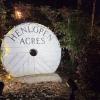A look back at Delaware's oyster industry
In the early 1900s, oyster and clam wagons sat on major city street corners, where people now grab quick lunches from hot dog, gyro or taco trucks.
Shellfish was once a major industry in Delaware, said aquaculture specialist John Ewart at a recent Clean Water Forum hosted by EDEN Delmarva. The Chesapeake Bay, Delaware Bay and the Inland Bays were hot spots for a shellfish industry so profitable its product was dubbed white gold.
“We have a very rich maritime history, and oysters played a prominent role in that,” Ewart said at the event, which also explored water pollution, stormwater management and agriculture practices during a daylong summit at the Atlantic Sands Hotel in Rehoboth Beach.
But a re-emergence of the industry has been slow in the making. It's now been four years since former Gov. Jack Markell signed House Bill 160 to establish a commercial shellfish aquaculture industry in the Inland Bays, and farmers are still waiting to get started.
Outcries from nearby property owners, worried about the aesthetics of the business, have delayed the program and resulted in several revisions, including a statewide activity approval process to limit acreage and a new bill recently introduced to further limit what shellfish farmers can do in Little Assawoman Bay.
“The program is still experiencing some bumps in the road,” Ewart said.
The proposed program, which would have growers working on 343 acres in Little Assawoman, Rehoboth and Indian River bays is minuscule compared to historical shellfish harvests. Finally, interested shellfish growers are now applying for leases, but it may take months before all 58 applicants select their sites. Once approved by the state – growers also need insurance, bonds, business plans and more – it could take up to three years until oysters grow large enough to make it to market.
If all 343 acres are leased and farmed, the Inland Bays program would be comparable to Rhode Island's 20-year commercial aquaculture program, which has 70 farms on about 275 acres, employs nearly 200 people and is worth more than $5 million annually, Ewart said.
Oysters are currently grown in Delaware Bay, where annual quotas have recently been set at about 11,000 bushels in total. That equates to more than 1.1 million oysters for local markets, only a fraction of the harvests once boasted by Delaware watermen.
In 1943, more than 3,000 acres in Rehoboth Bay and 1,100 acres in Indian River Bay were leased for oyster production. Clams also were plentiful in the Inland Bays in the 1950s, when shellfish harvesters landed up to 17 million hard clams in one year.
“It's a shadow of what it used to be,” Ewart said. “I don't think we'll ever get back to the way they were when John Smith came to the Chesapeake Bay in some of the stories you see in the historical record about his experience.” Smith, whose journals of visits to the Chesapeake Bay in the early 1600s are summarized by the National Park Service, catalogued his accounts of the bay's natural resources and inhabitants, including oysters that “lay as thick as stones.”
But things are starting to look up, Ewart said. A researcher from Delaware State University now is studying whether oysters planted dockside in the bays since 2003 through the Delaware Center for the Inland Bays oyster gardening program are rebooting the native population of bivalves.
“It takes a lot of work to restore these populations,” Ewart said. “Oysters are a keystone species. They're a main component of a healthy estuarine ecosystem, and restoration activities and commercial shellfish aquaculture activities can help facilitate and promote increasing these populations, which are very important to water quality and as an economic driver.”
To learn more about shellfish aquaculture in Delaware, go to darc.cms.udel.edu/ibsa.




















































